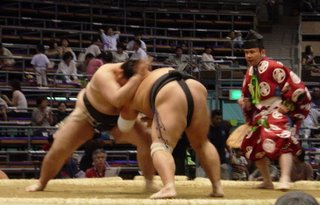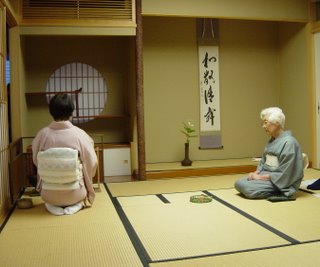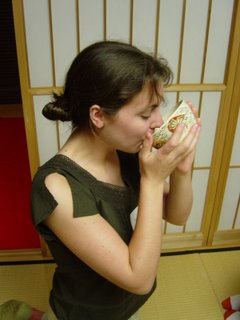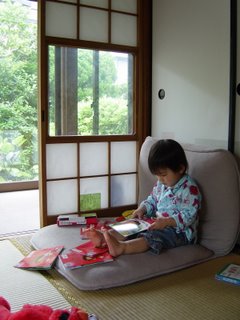Fuji Five Lakes
We travel to Fuji go-ko (five lakes) with Megan's officemates for a long "Marine Day" weekend. (We are not really sure what Marine day is suppose to celebrate and neither is Wikipedia.) We stayed the first night overlooking Lake Yamanaka. We had great views of Mount Fuji at dusk and daybreak when the clouds subsided.
 Our first view of Fuji-san came after sundown. As it got darker, we could see a little stream of light from the thousands of hiker heading up the north face of the mountain in order to catch the sun raise. We had a better view just before dawn.
Our first view of Fuji-san came after sundown. As it got darker, we could see a little stream of light from the thousands of hiker heading up the north face of the mountain in order to catch the sun raise. We had a better view just before dawn.

Fuji-san is about 3700 meters tall. What makes it so powerful is that it is a high peak among foothills. The perfect volcano shape is actually a result of three separate volcanoes.
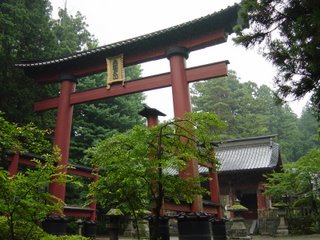 We hiked the first half of the of the volcano from the Sengen Shrine to the fifth station. The Sengen Shrine was the traditional starting place for the ascent up Fuji-san. The first half of the hike was in beautiful woodlands and through many sacred places. It was also virtually devoid of people which is strange since the top half of the hike is one of the most popular hikes in the world.
We hiked the first half of the of the volcano from the Sengen Shrine to the fifth station. The Sengen Shrine was the traditional starting place for the ascent up Fuji-san. The first half of the hike was in beautiful woodlands and through many sacred places. It was also virtually devoid of people which is strange since the top half of the hike is one of the most popular hikes in the world.
It was nice having a 3-day weekend, but traveling during Japanese holidays is not so enjoyable. The lesson that we learned is to take the train if possible. We got stuck in a four hour traffic jam on the way home.
 Our first view of Fuji-san came after sundown. As it got darker, we could see a little stream of light from the thousands of hiker heading up the north face of the mountain in order to catch the sun raise. We had a better view just before dawn.
Our first view of Fuji-san came after sundown. As it got darker, we could see a little stream of light from the thousands of hiker heading up the north face of the mountain in order to catch the sun raise. We had a better view just before dawn.
Fuji-san is about 3700 meters tall. What makes it so powerful is that it is a high peak among foothills. The perfect volcano shape is actually a result of three separate volcanoes.
 We hiked the first half of the of the volcano from the Sengen Shrine to the fifth station. The Sengen Shrine was the traditional starting place for the ascent up Fuji-san. The first half of the hike was in beautiful woodlands and through many sacred places. It was also virtually devoid of people which is strange since the top half of the hike is one of the most popular hikes in the world.
We hiked the first half of the of the volcano from the Sengen Shrine to the fifth station. The Sengen Shrine was the traditional starting place for the ascent up Fuji-san. The first half of the hike was in beautiful woodlands and through many sacred places. It was also virtually devoid of people which is strange since the top half of the hike is one of the most popular hikes in the world.It was nice having a 3-day weekend, but traveling during Japanese holidays is not so enjoyable. The lesson that we learned is to take the train if possible. We got stuck in a four hour traffic jam on the way home.





